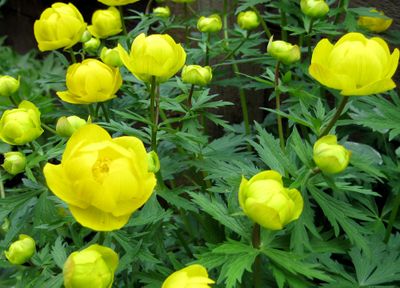Perennial beauty
Low-maintenance globeflower puts on a show

Today’s featured plant may be called the Common Globeflower but it’s anything but common. While vacationing recently in Alaska, I spotted this globeflower growing in a garden in Anchorage. And if it grows well up there, which is in USDA zone 4, I figure it has to do well in our region, which is in zone 5.
Many gardeners in the Inland Northwest are familiar with globeflowers that have orange or gold blossoms but, as you can see from the photograph, the yellow flowers of the Superbus cultivar are spectacular. It’s one of those must-have plants on my list.
Native to Europe, globeflowers are easy perennials to grow. They prefer sites that are in shade or partial shade, and they like to grow in a moist soil, making them an ideal candidate for a bog garden or any area where the soil stays damp. The dark green leaves are palmate and shiny, providing a nice contrast with the bright yellow flowers.
These showy blooms are reminiscent of ranunculus flowers, which are pretty but aren’t hardy enough to grow as a perennial here. The blossoms are 1 ½ inches in diameter, and bloom from late spring to late summer. They make good cutting flowers.
I suppose Martha Stewart would describe this beautiful yellow color as “butter yellow,” and it’s easy to see that they would brighten up any flower bed in which they are planted. Some gardeners might be alarmed that the globeflower is a member of the buttercup family, as buttercups are known to be quite invasive. But I’ve never noted any problems like that with globeflowers I’ve grown in the past.
Globeflowers can be propagated by seed or by plant division in the fall or very early spring.